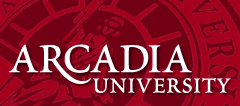Date of Award
Spring 2025
Degree Name
Bachelor of Arts
Department
Visual & Performing Arts; College of Arts & Sciences
First Advisor
Dr. Jill Pederson
Abstract
Following the Protestant Reformation, Spain was in a unique position compared to the rest of Europe. The importance of Catholicism was intrinsic to Spanish society by this point, as it was under King Ferdinand and Queen Isabella, aptly dubbed the Catholic Monarchs, that the Christians reconquered the Iberian peninsula in 1492, after an eight century rule by Arab-Muslims. In the centuries that followed, Spanish architecture reached new levels of grandeur in the wake of reformed Catholic doctrine. Following the motto “docere, delectare, movere”(to teach, to delight, to move), architects were urged to convey the Church’s power and garner new supporters. The ultrabaroque, or “Churrigueresque” as it was known in Spain, emerged in the late-seventeenth century as an architectural style characterized by exuberant ornamentation and stucco along the facades of primarily ecclesiastical buildings. But what makes this so unique? Through the reinvigorated spirit of the Plateresque, a principally Spanish style, combined with the integral Solomonic and estípite columns and elaborate retablos, or altarpieces, the Spanish developed an architectural style uniquely their own. This style would go on to expand further to their colonies in the Americas, dominating the principal design for missionary architecture and cementing the Baroque and subsequently the “Churrigueresque” as a global art movement. Through my studies and experiences in Granada this past fall semester, I will demonstrate how the Spanish ultrabaroque was a truly unique style that emerged from the seventeenth and eighteenth centuries, through a series of case studies on the Granada Charterhouse and the Basilica of San Juan de Dios, along with secondary examples in the Convento de San Esteban in Salamanca and the Granada Cathedral. These locations exemplify the ultrabaroque style found in religious interiors and reflect the key characteristics of this Spanish style and identity.
Recommended Citation
Staeben, Sarah, "Ultrabaroque Grandeur: Examining the Churrigueresque in Spanish Architecture from the Seventeenth and Eighteenth Centuries" (2025). Capstone Showcase. 1.
https://scholarworks.arcadia.edu/showcase/2025/arts/1
Included in
Ancient, Medieval, Renaissance and Baroque Art and Architecture Commons, Interior Architecture Commons
Ultrabaroque Grandeur: Examining the Churrigueresque in Spanish Architecture from the Seventeenth and Eighteenth Centuries
Following the Protestant Reformation, Spain was in a unique position compared to the rest of Europe. The importance of Catholicism was intrinsic to Spanish society by this point, as it was under King Ferdinand and Queen Isabella, aptly dubbed the Catholic Monarchs, that the Christians reconquered the Iberian peninsula in 1492, after an eight century rule by Arab-Muslims. In the centuries that followed, Spanish architecture reached new levels of grandeur in the wake of reformed Catholic doctrine. Following the motto “docere, delectare, movere”(to teach, to delight, to move), architects were urged to convey the Church’s power and garner new supporters. The ultrabaroque, or “Churrigueresque” as it was known in Spain, emerged in the late-seventeenth century as an architectural style characterized by exuberant ornamentation and stucco along the facades of primarily ecclesiastical buildings. But what makes this so unique? Through the reinvigorated spirit of the Plateresque, a principally Spanish style, combined with the integral Solomonic and estípite columns and elaborate retablos, or altarpieces, the Spanish developed an architectural style uniquely their own. This style would go on to expand further to their colonies in the Americas, dominating the principal design for missionary architecture and cementing the Baroque and subsequently the “Churrigueresque” as a global art movement. Through my studies and experiences in Granada this past fall semester, I will demonstrate how the Spanish ultrabaroque was a truly unique style that emerged from the seventeenth and eighteenth centuries, through a series of case studies on the Granada Charterhouse and the Basilica of San Juan de Dios, along with secondary examples in the Convento de San Esteban in Salamanca and the Granada Cathedral. These locations exemplify the ultrabaroque style found in religious interiors and reflect the key characteristics of this Spanish style and identity.
